Want to feel the windsurfing rush?
Want to feel part of the board and rig?
As you progress into slightly stronger winds you’ll soon seek and appreciate the wonders of harnessing. Not only does it save your arms, but it also makes it far easier to control the power in the sail. You can try harnessing in very light winds with a small sail, but that amazing feeling of lying back against the rig needs a decent size sail and a reasonable breeze to support your weight. Harnessing is soon followed by slipping your feet into the footstraps, the combination of these two key components gives you the control and freedom to blast wherever you want to go! Here’s how to do it with ease!
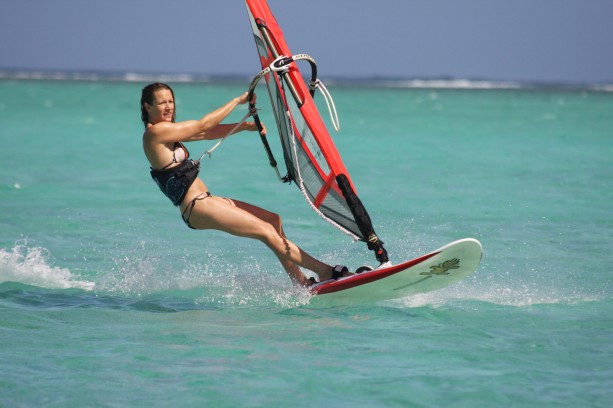
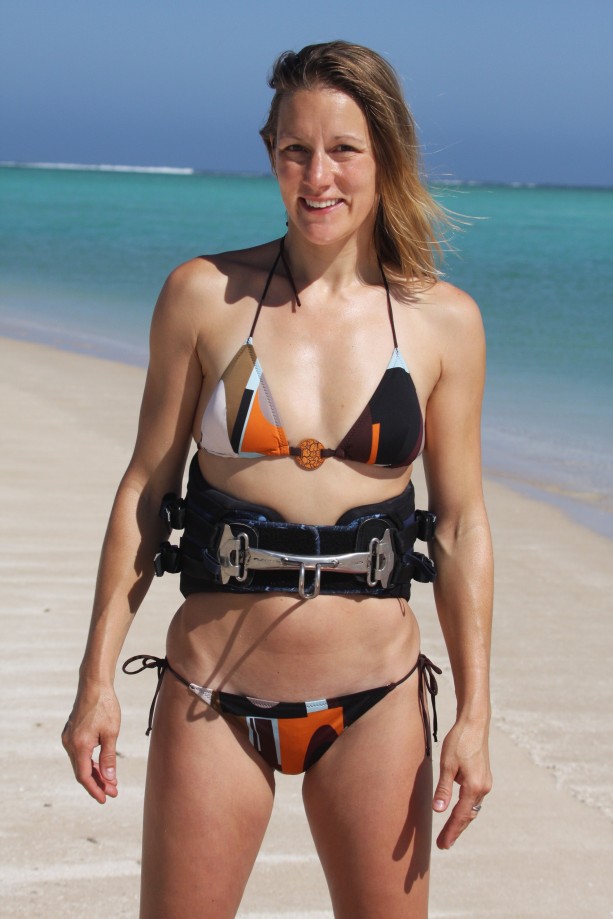
HARNESSING
Your first consideration is buying the right harness. It’s now pretty much universally accepted that a waist harness is the best short and long term style of harness to own for all-round use. Get one that fits well and has an easy tightening system. As for harness lines, buy them to suit the length of your arm (see below) and then take some time to position them correctly on the land before fine-tuning on the water.
Waist harnesses are positioned so that the hook is below belly button height on men and above belly button height for women. They should sit snug around the body and be tightened so that the hook doesn’t ride up when you hook in.
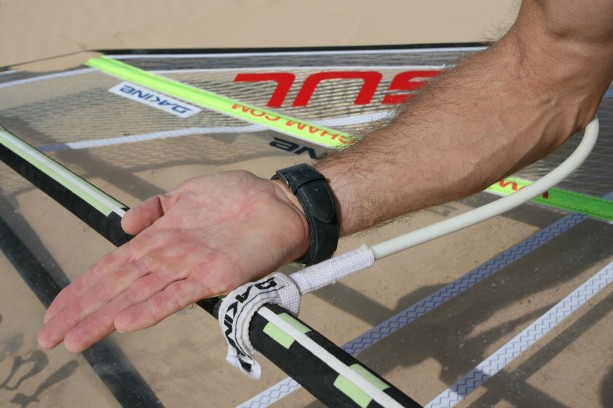
HOW TO SET YOUR HARNESS LINES
The Velcro tabs should be no wider than a hands width apart.
Place the very tip of your elbow in the line and tension it.
Elbow to ‘chicken bone’ part of palm minimum length
Elbow to ‘blister pad’ part of palm maximum length.
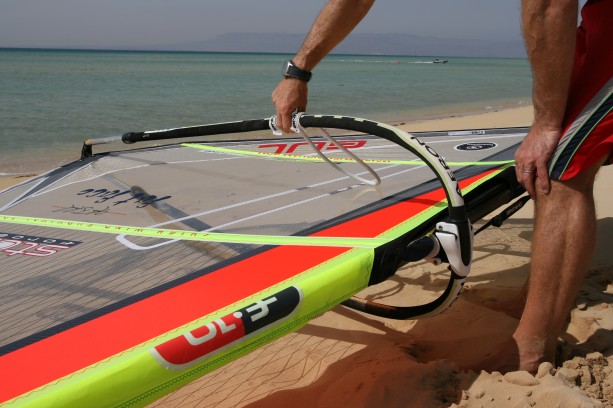
HARNESS LINE POSITIONING
Before going on the water, use this great tip to get a STARTING point for harness line positioning.
Find a place out of the wind, hold and lift the boom with two fingers.
Adjust to find the balance point so that the boom is horizontal when you lift it.
Fix your harness lines just either side of that point.
You’ll notice that…
On smaller sails the lines will be placed slightly further forward on the boom.
On larger sails the lines will be placed slightly further back on the boom.
Remember this is your starting position, YOU MUST FINE TUNE ON THE WATER!
HOW TO HOOK IN
VISION & SAILING LINE
Apart from a brief glimpse hooking in, look forward and sail slightly upwind to help bring the harness line outboard and towards you.
STANCE Form a good 7 shaped stance before and after hooking in.
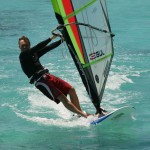
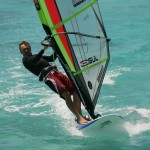
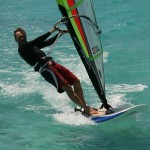
Sink low to pull the whole rig to windward.
Then use a short sharp pull on the boom to swing the line towards the body.
Simultaneously lift the hips to hook into the line.
Once ‘hooked in’, push back and down in the harness to keep the weight in the line.
Look forward and re-establish that 7 shaped stance, leaning outboard to maintain harness line tension.
Your weight distribution should be 90% harness and 5% on each arm.
TOP TIP: To unhook, pull the boom towards you and slightly lift the hips.
ON WATER TUNING GUIDE
Move the harness lines back if you feel the backhand pulling a lot.
Move the harness lines forward if you feel the front hand pulling a lot.
HARNESSING PROBLEMS
- Avoid standing up to hook in other wise you get pulled over by the rig.
- Do you suddenly head into wind? This is due to sheeting out too much or over weighting the back foot.
- Keep falling out of the harness line? You’re pulling on your arms too much.
- To control excess speed, avoid catapults or being pulled over by the rig, adopt a wide foot spread and put more weight down in the harness.
- Should you get caught under the sail whilst hooked in, don’t panic, push the line away from the hook and swim away from the rig.
Settled in the harness? The next quest is the comfort and added control of the footstraps!
Photos: Karen Bornhoft Windwise
Simon Bornhoft Windwise

